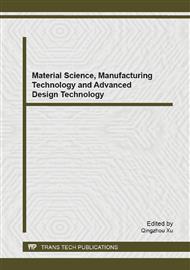[1]
http: /www. printedelectronicsnow. com/articles/2009/05/the-rfid-report.
Google Scholar
[2]
Yang, L.; Rida, A.; Vyas, R.; Tentzeris, M. M., RFID tag and RF structures on a paper substrate using inkjet-printing technology. Microwave Theory and Techniques, IEEE Transactions on 2007, 55 (12), 2894-2901.
DOI: 10.1109/tmtt.2007.909886
Google Scholar
[3]
Choi, M. -C.; Kim, Y.; Ha, C. -S., Polymers for flexible displays: from material selection to device applications. Progress in Polymer Science 2008, 33 (6), 581-630.
DOI: 10.1016/j.progpolymsci.2007.11.004
Google Scholar
[4]
Wolf, F. M.; Perelaer, J.; Stumpf, S.; Bollen, D.; Kriebel, F.; Schubert, U. S., Rapid low-pressure plasma sintering of inkjet-printed silver nanoparticles for RFID antennas. Journal of Materials Research 2013, 28 (09), 1254-1261.
DOI: 10.1557/jmr.2013.73
Google Scholar
[5]
Magdassi, S.; Grouchko, M.; Berezin, O.; Kamyshny, A., Triggering the sintering of silver nanoparticles at room temperature. ACS nano 2010, 4 (4), 1943-(1948).
DOI: 10.1021/nn901868t
Google Scholar
[6]
Shin, D. -Y.; Lee, Y.; Kim, C. H., Performance characterization of screen printed radio frequency identification antennas with silver nanopaste. Thin Solid Films 2009, 517 (21), 6112-6118.
DOI: 10.1016/j.tsf.2009.05.019
Google Scholar
[7]
Tang, Y.; He, W.; Zhou, G.; Wang, S.; Yang, X.; Tao, Z.; Zhou, J., A new approach causing the patterns fabricated by silver nanoparticles to be conductive without sintering. Nanotechnology 2012, 23 (35), 355304.
DOI: 10.1088/0957-4484/23/35/355304
Google Scholar
[8]
Li, W. W.; Mo, L. X.; Fu, J. L.; Li, W. B.; Ran, J.; Fan, X. M.; Li, Y. L.; Li, L. H., Preparation of Water-Based Nano-Silver Gravure Conductive Ink Used for Printed Electronics. Applied Mechanics and Materials 2013, 262, 523-526.
DOI: 10.4028/www.scientific.net/amm.262.523
Google Scholar
[9]
Helmut, K., Handbook of Print Media. Heidelberg: Heidelberg druckmaschinen AG (2001).
Google Scholar
[10]
Steinmueller, U.; Gulbins, J., Fine Art Printing for Photographers: Exhibition Quality Prints with Inkjet Printers. O'Reilly Media, Inc.: (2010).
Google Scholar
[11]
Kim, D.; Jeong, S.; Park, B. K.; Moon, J., Direct writing of silver conductive patterns: Improvement of film morphology and conductance by controlling solvent compositions. Applied Physics Letters 2006, 89 (26), 264101.
DOI: 10.1063/1.2424671
Google Scholar
[12]
Zou, G.; Gronqvist, H.; Starski, J. P.; Liu, J., Characterization of liquid crystal polymer for high frequency system-in-a-package applications. Advanced Packaging, IEEE Transactions on 2002, 25 (4), 503-508.
DOI: 10.1109/tadvp.2002.807593
Google Scholar


